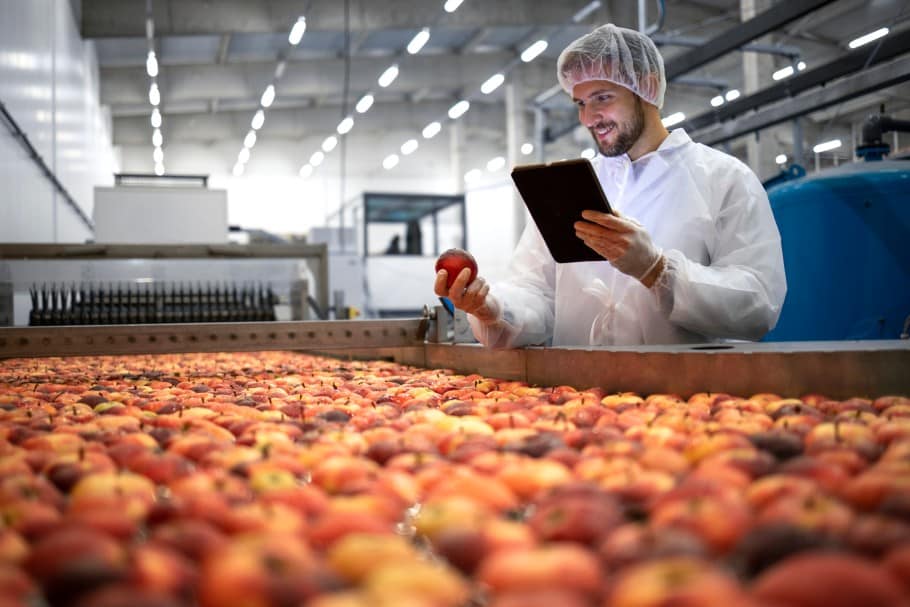New Guidelines on the Horizon for Precautionary Allergen Labelling (PAL)
By Lauren Solar
Food allergen risk management and accurate labelling have been interrelated issues since ingredient listings were first legislated, back in the 1970’s. Studies show that undeclared food allergens are the most common cause of food recalls; in one US review from 2019, 44% were attributed. To address this issue, the ‘may contain’ statement, or precautionary allergen label, was created.
While this seems straight-forward, experience has proven that the “may contain” statements are not always used correctly. Some products tested contain large enough amounts that the allergen should be included in the main ingredient list. Others carry precautionary labels for allergens that were not present at all. Because of this, some consumers risk a serious allergic reaction because they disregard these labels, perceiving them as a liability measure, to minimize the manufacturer’s legal risk. Other consumers avoid foods they could safely eat, unnecessarily limiting their food choices.
Food manufacturers also face challenges in deciding when and how to use these precautionary labels. For one thing, the list of what qualifies as a priority allergen varies from country to country. As well, inexpensive, standardized tests are only available for a few allergens. If the company is not large enough to have its own in-house testing facilities, testing for minute amounts of allergens is expensive and time-consuming. And even when testing is available, it is unclear at what threshold most allergens become a serious risk to consumers. Furthermore, accepted thresholds vary from country to country.
However, new guidelines are coming that should help food manufacturers address these issues.
Recently, a joint FAO/WHO meeting brought a group of experts to update the risk assessment of food allergens. Their findings will be incorporated into the Codex Alimentarius standards. The first two reports of the three-part undertaking are complete. The first step was to determine the world-wide priority allergens that need to be addressed and a paper released in May 2021 outlined their findings. The second step was to determine whether thresholds could be established for these allergens. They agreed that this should be a ‘dose’ which would result in an allergic reaction in only 1 to 5% of the allergic population. The second paper published in August 2021, reveals the details of their analysis. The final step, based on these two studies, will establish guidelines for the use of precautionary allergen labelling. The findings of this consultation are expected to be released early in 2022.
Another project underway in Canada is addressing some of the same concerns. It is spearheaded by Food Allergy Canada, in partnership with Maple Leaf Foods, Université Laval and Health Canada.
“It’s a collaboration of members of the food industry, academia, health care professionals, consumer groups, and Health Canada, to develop voluntary, consensus-based allergen management guidelines that would be useful for all food manufacturers in the Canadian market,” says Beatrice Povolo, Director, Advocacy & Media Relations at Food Allergy Canada.
Like the Codex group, they are establishing measurable thresholds for priority allergens. This could be one element of an allergen risk management plan. The threshold would help with company’s decision whether to use a precautionary label or not.
“The key stumbling block with Precautionary Allergen Labelling (PAL) is that this type of labeling has been, and will continue to be, voluntary in Canada which results in over-use and mis-use by many manufacturers and their customers,” says Sharon Mohammed, Director, Regulatory Management – Government and Industry Relations at Maple Leaf Foods. “This project, which is 75% funded by Agri-Food and Agriculture Canada – AgriAssurance Program, will bring more awareness and focus to these challenges and offer tangible solutions.”
“Once the guidelines are created, we will develop resources for industry – templates, checklists, and other online resources – that will be helpful for companies starting to build their allergen risk management plan or for those reviewing what’s been suggested as best practices to update their current risk assessment approach,” Povolo said, outlining the second step of this project.
These guidelines and resources, which will be available in the fall of 2022, are intended to help companies make more informed decisions, as well as support food safety professionals, especially in smaller and medium-sized companies, as they strive to implement and improve their food allergen risk management procedures.
The final, and critical, step in this initiative is consumer education. Making sure those who need these labels to safeguard their health read and interpret the precautionary statements properly will improve food safety in a direct and meaningful way.
About the Author:
Lauren Solar has been a freelance writer and editor for over thirty years, writing mostly on health-related topics and for not-for-profit organizations. Because of her own food allergies and her extensive background with allergy advocacy groups, she helped create the Food Allergen Food Safety Training offered by TrainCan and is a certified trainer on this topic. She has also done a great deal of technical and business writing.

-
 FeaturedRisk management
The Cost of a Breach: What a Cyberattack Could Mean for Food Safety Recalls
FeaturedRisk management
The Cost of a Breach: What a Cyberattack Could Mean for Food Safety Recalls
-
 FeaturedRisk management
Securing the Food Chain: How ISO/IEC 27001 Strengthens Cybersecurity
FeaturedRisk management
Securing the Food Chain: How ISO/IEC 27001 Strengthens Cybersecurity
-
 FeaturedRisk management
Revolutionizing Food Safety Training: Breaking Out of the “Check-the-Box” Mentality
FeaturedRisk management
Revolutionizing Food Safety Training: Breaking Out of the “Check-the-Box” Mentality
-
 GFSI Standards
GFSI 2025: Building Trust, Tech-Forward Solutions, and Global Unity in Food Safety
GFSI Standards
GFSI 2025: Building Trust, Tech-Forward Solutions, and Global Unity in Food Safety
-
 FeaturedFood Safety
Integrated Pest Management: Strategies to Protect Your Brand’s Reputation
FeaturedFood Safety
Integrated Pest Management: Strategies to Protect Your Brand’s Reputation
-
 FeaturedFood Safety Culture & Training
No Open Door Policy: Challenges That Impact Pest Control in Food Processing Plants
FeaturedFood Safety Culture & Training
No Open Door Policy: Challenges That Impact Pest Control in Food Processing Plants




